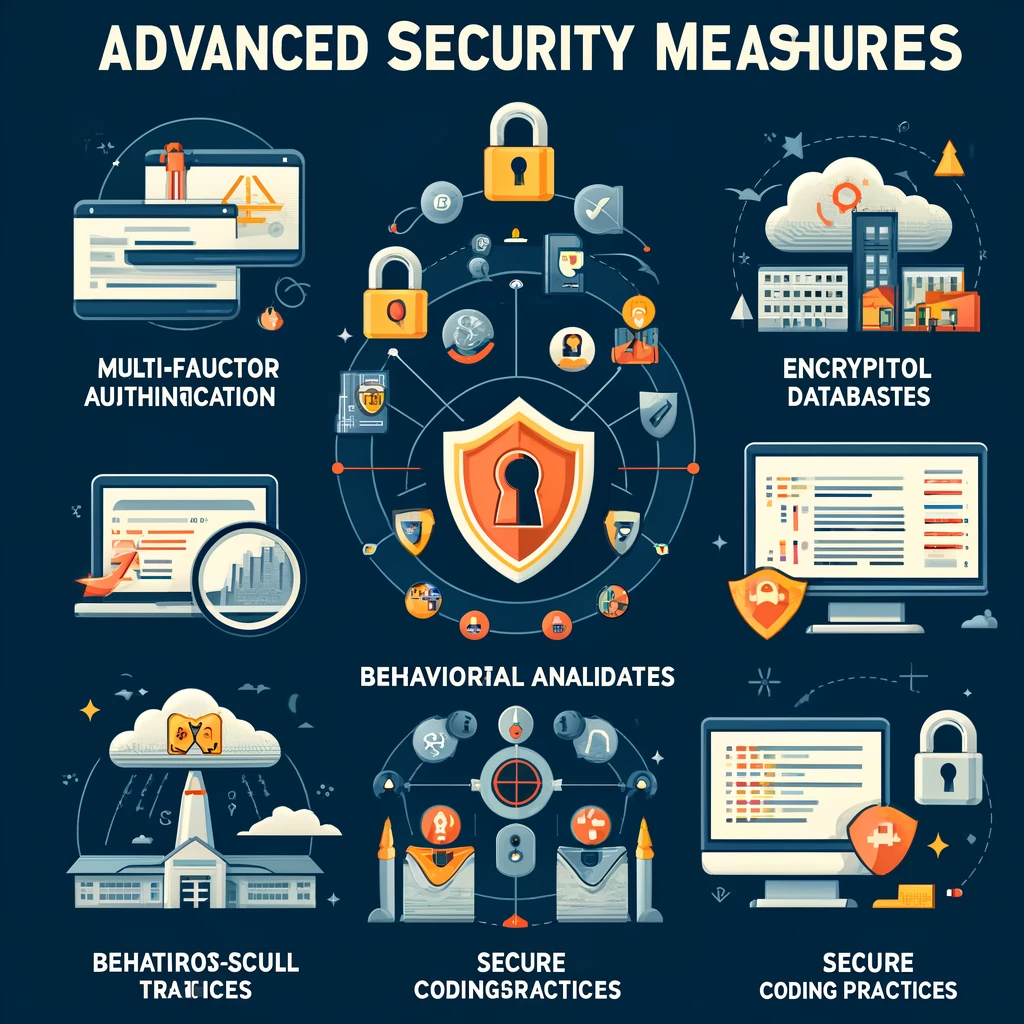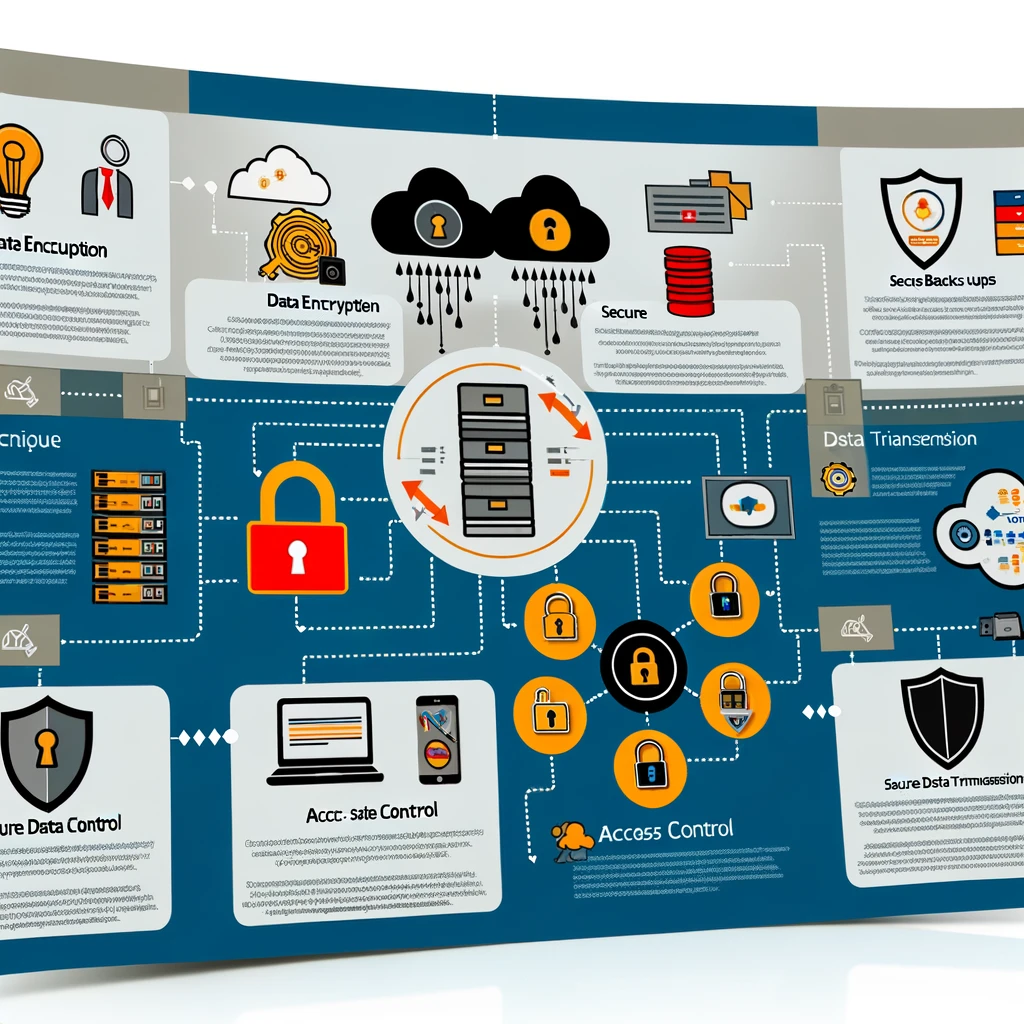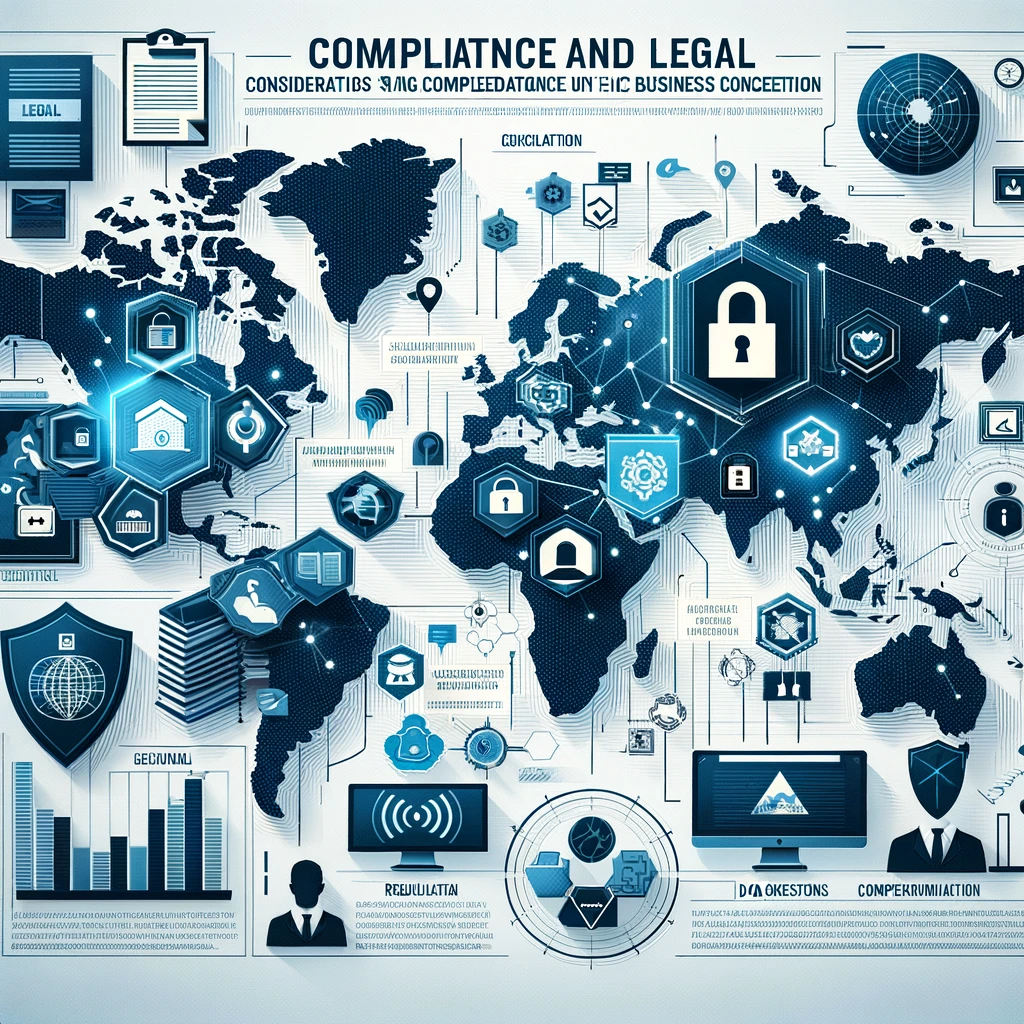Introduction

In today’s rapidly evolving digital landscape, the security of your business website is more crucial than ever. For Columbia businesses, large and small, the threat of cyber attacks is a real and pressing concern. Cyber threats can range from data breaches and malware infections to more sophisticated ransomware attacks and phishing schemes, all of which pose significant risks to your business operations and reputation.
Why is Website Security Paramount?
- Protect Sensitive Data: Your website likely holds sensitive data, such as customer information, proprietary business details, and financial records.
- Maintain Customer Trust: Customers expect their data to be secure. A breach could damage your relationship with them and harm your brand’s reputation.
- Ensure Business Continuity: Cyber attacks can disrupt your business operations, leading to downtime and loss of revenue.
Given these risks, it’s essential to take proactive steps to safeguard your online presence. This blog series will guide you through the essentials of cyber protection, from understanding the types of cyber threats to implementing advanced security measures and ensuring legal compliance. Whether you’re a tech-savvy business owner or just starting to explore the importance of cybersecurity, you’ll find valuable insights and actionable tips to help protect your Columbia business from online threats.
Stay tuned as we delve deeper into the critical world of cybersecurity, providing you with the knowledge and tools you need to defend your digital domain effectively. Let’s embark on this journey to secure your business against the ever-present threat of cyber attacks.
Understanding Cyber Threats

As we dive into the realm of cybersecurity, it’s crucial for business owners to recognize the various types of cyber threats that can target their online assets. Awareness is the first step toward protection. In this section, we’ll break down the common cyber threats that Columbia businesses might face, helping you understand what you’re up against and how it could impact your operations.
Types of Cyber Threats:
- Malware: This encompasses any malicious software designed to harm or exploit any programmable device, service, or network. Malware includes viruses, worms, Trojan horses, and ransomware.
- Phishing: This involves fraudulent attempts to obtain sensitive information such as usernames, passwords, and credit card details by disguising oneself as a trustworthy entity in electronic communications.
- Ransomware: A type of malicious software designed to block access to a computer system until a sum of money is paid.
- DDoS Attacks (Distributed Denial of Service): These attacks aim to overwhelm your website with traffic from multiple sources, effectively making it unavailable to intended users.
Impact on Your Business:
- Data Breach: Unauthorized access to your data can lead to loss of sensitive or critical information.
- Financial Loss: From theft of financial information to ransom payments and loss of business during downtime.
- Reputation Damage: A cyber attack can harm your reputation, resulting in lost trust and customers.
Table of Common Cyber Threats and Their Impact:
| Threat Type | Description | Potential Impact |
|---|---|---|
| Malware | Malicious software that includes viruses and ransomware. | Data theft, system damage. |
| Phishing | Fraudulent attempts to obtain sensitive information. | Identity theft, financial fraud. |
| Ransomware | Malware that locks access to files until ransom is paid. | Financial loss, operational disruption. |
| DDoS Attacks | Overload of server resources, making the website inaccessible. | Lost revenue, damage to customer trust. |
Preventative Measures:
- Education and Training: Regularly train your staff on recognizing and avoiding phishing attacks.
- Security Software: Utilize antivirus software and firewalls to protect against malware.
- Data Backup: Regularly back up your data to mitigate the damage from ransomware or data loss incidents.
- Regular Updates: Keep your software and systems updated to protect against known vulnerabilities.
By understanding these threats and preparing accordingly, you can significantly reduce the risk they pose to your business. The next sections will guide you through setting up effective security practices to keep your online environment safe and resilient against these cyber challenges.
Essential Security Practices

Securing your business website is akin to locking the doors to your store or office—it’s fundamental to protecting your assets, your data, and your reputation. Implementing basic security measures can prevent the majority of cyber threats and ensure your business operates smoothly and securely. Here’s a rundown of essential security practices that every Columbia business owner should implement.
1. Regular Software Updates
- Why It’s Important: Many cyber attacks exploit vulnerabilities in outdated software. Regular updates patch these vulnerabilities, keeping your site secure.
- How to Implement: Enable automatic updates for your CMS, themes, plugins, and server operating system.
2. Strong Password Policies
- Why It’s Important: Weak passwords are a common entry point for hackers. Strong, complex passwords significantly reduce this risk.
- How to Implement: Enforce passwords that are at least 12 characters long, include numbers, symbols, and both upper and lower case letters. Consider using a password manager to generate and store complex passwords.
3. Secure Socket Layer (SSL)/Transport Layer Security (TLS)
- Why It’s Important: SSL/TLS encrypts data transmitted between your website and users, protecting sensitive information from being intercepted.
- How to Implement: Obtain an SSL certificate and configure your website to use HTTPS by default.
4. Use a Web Application Firewall (WAF)
- Why It’s Important: A WAF protects your website from malicious traffic and blocks common web attacks.
- How to Implement: Choose a WAF that integrates well with your CMS and hosting setup. Many hosting providers offer WAFs as part of their service packages.
5. Regular Backups
- Why It’s Important: In the event of a cyber attack or data loss, having a recent backup of your website allows you to restore it quickly.
- How to Implement: Automate backups to occur at least daily and store them in a secure, offsite location.
Security Checklist Table:
| Security Practice | Implementation Tips | Impact on Security |
|---|---|---|
| Regular Updates | Automate updates; monitor for new releases. | Closes security gaps from known vulnerabilities. |
| Strong Passwords | Enforce complex password policies; use a manager. | Reduces risk of unauthorized access. |
| SSL/TLS | Obtain and install an SSL certificate. | Secures data in transit; improves user trust. |
| Web Application Firewall | Deploy a WAF suited to your specific needs. | Protects against common attacks and malicious traffic. |
| Regular Backups | Automate and store offsite. | Ensures quick recovery from data loss or attacks. |
By adopting these fundamental security practices, you can significantly enhance the security of your Columbia business website. While no security measure can guarantee complete immunity from cyber threats, these steps form a strong foundation that will protect your site against the majority of potential attacks. Remember, cybersecurity is an ongoing process that requires attention and adaptation as new threats emerge. Stay vigilant and keep your defenses up to date.
Advanced Security Measures

While basic security practices provide a good foundation, advanced security measures are essential for Columbia businesses that handle sensitive information or operate in high-risk environments. These strategies involve more sophisticated technologies and methodologies to safeguard your website from increasingly complex threats. Let’s explore some of these advanced measures to further bolster your cybersecurity defenses.
1. Multi-Factor Authentication (MFA)
- What It Is: MFA adds an additional layer of security by requiring users to provide two or more verification factors to gain access to a resource.
- Why It’s Important: It significantly reduces the risk of unauthorized access, as obtaining multiple authentication factors is much harder for attackers.
2. Encrypted Databases
- What It Is: Encryption transforms data into a secure format that requires a key or password to read, protecting data at rest and in transit.
- Why It’s Important: Even if an intruder gains access to your database, the encrypted data remains protected and unusable without the decryption keys.
3. Behavioral Analytics
- What It Is: This technology uses data analytics to monitor user behavior on a network or system to detect anomalies that may indicate a security threat.
- Why It’s Important: It helps in early detection of potential breaches or insider threats, allowing for rapid response before significant damage is done.
4. Secure Coding Practices
- What It Is: Implementing secure coding guidelines to prevent vulnerabilities that could be exploited by hackers, such as SQL injection or cross-site scripting (XSS).
- Why It’s Important: Secure coding ensures that the website is fundamentally resistant to intrusion and misuse.
Table of Advanced Security Techniques:
| Technique | Description | Benefits |
|---|---|---|
| Multi-Factor Authentication | Requires additional verification beyond passwords. | Enhances security by adding layers of authentication. |
| Encrypted Databases | Encrypts data to prevent unauthorized access. | Protects sensitive data from breaches. |
| Behavioral Analytics | Monitors for unusual activity patterns. | Helps detect and respond to threats quickly. |
| Secure Coding Practices | Adheres to coding standards to minimize vulnerabilities. | Reduces potential entry points for attackers. |
Implementing These Measures:
- Assess Your Needs: Determine which advanced security measures are most relevant based on your business type and the sensitivity of the data you handle.
- Seek Expertise: Implementing advanced security measures can be complex. Consider consulting with cybersecurity experts.
- Continuous Review: Security is an ongoing process. Regularly review and update your security measures to address new threats as they emerge.
By integrating these advanced security measures into your cybersecurity strategy, you not only enhance your defenses but also demonstrate a commitment to protecting your customers’ data and maintaining their trust. This proactive approach is crucial in today’s digital landscape, where the cost of a security breach can be devastating to your business reputation and financial stability.
Data Protection Strategies

In the digital world, data is one of the most valuable assets a business has. Protecting this data is crucial not only to safeguard your business and your customers but also to comply with legal standards. Implementing effective data protection strategies can minimize the risk of breaches and data loss. Let’s explore several key strategies that every Columbia business should consider.
1. Data Encryption
- What It Is: Encryption transforms readable data into encoded data that can only be read or processed after it’s been decrypted.
- Why It’s Important: Encrypting data ensures that even if the data is intercepted, it cannot be read by unauthorized parties.
2. Secure Backups
- What It Is: Regularly creating copies of data that can be restored in case of data loss or a data breach.
- Why It’s Important: Secure backups are crucial for disaster recovery and business continuity, ensuring that you can quickly restore operations after a loss.
3. Access Control
- What It Is: Measures that restrict access to data to authorized users only.
- Why It’s Important: Proper access controls prevent unauthorized access to sensitive data, reducing the risk of internal and external breaches.
4. Secure Data Transmission
- What It Is: Ensuring that data transmitted over networks is protected against interception.
- Why It’s Important: Secure transmission protects your data from being intercepted during transit by encrypting the data.
Table of Data Protection Techniques:
| Strategy | Technique | Benefits |
|---|---|---|
| Data Encryption | Encrypt sensitive data both at rest and in transit. | Protects data from unauthorized access. |
| Secure Backups | Regularly back up data and store it securely offsite. | Enables quick recovery from data loss. |
| Access Control | Use strong authentication and authorization mechanisms. | Ensures only authorized users can access data. |
| Secure Data Transmission | Use protocols like HTTPS, SSL/TLS for data transmission. | Guards against data interception. |
Implementing These Measures:
- Conduct a Data Audit: Identify what data you need to protect and where it resides.
- Develop a Policy: Create clear policies for data encryption, access control, and data transmission.
- Train Your Employees: Educate your team on the importance of data protection and secure practices.
By establishing these data protection strategies, you can significantly enhance the security of sensitive information and bolster your defenses against cyber threats. Remember, protecting your data is not just about avoiding financial losses—it’s about maintaining trust with your customers and ensuring the longevity of your business in the digital marketplace.
Monitoring and Response

In the realm of cybersecurity, being proactive is key, but having a robust monitoring and response system is just as crucial. This system ensures that you can quickly detect any security incidents and respond effectively to mitigate any potential damage. Here’s how Columbia businesses can establish effective monitoring and response mechanisms to protect their online environments.
1. Continuous Monitoring
- What It Is: The practice of continuously scanning your systems and networks for unusual activity that could indicate a security threat.
- Why It’s Important: Continuous monitoring allows for the early detection of potential security incidents, minimizing the time attackers have inside your system.
2. Alert Systems
- What It Is: Automated systems that notify you when potential security threats are detected.
- Why It’s Important: Timely alerts enable quicker responses, which can drastically reduce the impact of attacks.
3. Incident Response Plan
- What It Is: A predefined plan that outlines what steps to take in the event of a security breach.
- Why It’s Important: Having a plan in place ensures that everyone knows their roles and responsibilities during an incident, helping to manage and mitigate it efficiently.
4. Regular Security Audits
- What It Is: Scheduled audits of your security infrastructure and policies to identify vulnerabilities.
- Why It’s Important: Regular audits help ensure that your security measures are up to date and effective against current threats.
Table of Monitoring and Response Strategies:
| Component | Strategy | Impact |
|---|---|---|
| Continuous Monitoring | Implement tools to monitor network and system activities. | Early detection of threats, reducing potential damage. |
| Alert Systems | Set up automated alerts for suspicious activities. | Ensures immediate awareness and action on threats. |
| Incident Response Plan | Develop and regularly update an emergency response plan. | Prepares the team for quick and effective action. |
| Security Audits | Conduct regular security evaluations. | Maintains and improves the effectiveness of security measures. |
Implementing These Measures:
- Choose the Right Tools: Invest in quality cybersecurity monitoring tools that align with your specific needs.
- Train Your Team: Ensure that all team members understand how to respond to security alerts and are familiar with the incident response plan.
- Review and Update: Regularly review and update your monitoring tools, alert systems, and response plans to adapt to new threats and changes in your business structure.
By establishing a comprehensive monitoring and response system, you not only enhance your ability to detect and respond to threats but also strengthen your overall cybersecurity posture. This proactive and prepared approach is essential for protecting your assets, your data, and your reputation in an increasingly digital world.
Educating Your Team

In the digital age, where cyber threats evolve rapidly, the importance of educating your team on cybersecurity cannot be overstated. It’s not just your IT department that needs to be aware; every employee who interacts with your digital systems plays a crucial role in safeguarding your business’s data. Here’s how you can effectively educate your team about cybersecurity.
Why Team Education is Crucial:
- Human Error Reduction: Many security breaches are the result of human error, such as clicking on phishing emails or using weak passwords.
- Awareness of Latest Threats: Regular training ensures that your team is up to date on the latest cyber threats and how to avoid them.
- Culture of Security: Creating a culture that prioritizes security can lead to better compliance with security policies and procedures.
Key Components of Cybersecurity Training:
- Regular Training Sessions: Conduct regular training sessions to keep security at the forefront of employees’ minds and update them on new threats.
- Practical Exercises: Include simulations of phishing attacks or other common threats to provide hands-on experience with spotting and responding to security risks.
- Clear Communication of Policies: Make sure all employees are aware of your company’s cybersecurity policies and understand their responsibilities.
Table of Educational Strategies:
| Strategy | Description | Benefits |
|---|---|---|
| Regular Training Sessions | Keep staff updated on the latest security practices. | Ensures ongoing vigilance and knowledge. |
| Simulated Phishing Tests | Test employees’ reactions to mock attacks. | Teaches practical skills in threat detection. |
| Policy Distribution | Ensure all employees have access to security policies. | Clarifies roles and responsibilities in maintaining security. |
Implementing Effective Training:
- Use Varied Formats: People learn in different ways. Use a mix of workshops, newsletters, and e-learning modules.
- Engage Managers: Get buy-in from management to reinforce the importance of cybersecurity across all levels.
- Track Progress: Keep records of training attendance and test results to identify areas that may need more focus.
By investing in the cybersecurity education of your team, you not only protect your business from potential threats but also build a more knowledgeable and vigilant workforce. This proactive approach is key to maintaining robust security in an era where cyber threats are an everyday reality.
Compliance and Legal Considerations

When it comes to cybersecurity, adhering to legal and compliance standards is not just about protecting your business from cyber threats; it’s also about safeguarding against legal repercussions that could arise from data breaches. Understanding the compliance requirements and legal considerations is crucial for any business operating in the digital space.
Why Legal Compliance Matters:
- Protect Consumer Data: Regulations are often designed to protect the consumer’s personal data, ensuring businesses take the necessary steps to secure it.
- Avoid Fines and Penalties: Non-compliance can lead to hefty fines and penalties, which can be detrimental to your business.
- Maintain Business Reputation: Compliance helps maintain trust with your customers and stakeholders by demonstrating a commitment to data protection.
Key Regulations to Consider:
- General Data Protection Regulation (GDPR): Impacts any business operating in the EU or handling the data of EU citizens.
- California Consumer Privacy Act (CCPA): Similar to GDPR, but for residents of California.
- Health Insurance Portability and Accountability Act (HIPAA): For businesses in the healthcare sector that handle protected health information (PHI).
Table of Compliance Requirements:
| Regulation | Description | Impact on Business |
|---|---|---|
| GDPR | Requires protection of personal data and privacy of EU citizens. | Affects any business with EU customers. |
| CCPA | Grants California residents rights regarding their personal information. | Affects businesses with California customers. |
| HIPAA | Protects sensitive patient health information. | Affects healthcare providers, insurers, and their associates. |
Implementing Compliance Measures:
- Data Protection Officer: Consider appointing a DPO to oversee data security strategy and compliance.
- Regular Audits: Conduct regular audits to ensure your cybersecurity practices meet regulatory requirements.
- Employee Training: Regular training on compliance requirements and data protection practices is essential.
Understanding and integrating these legal and compliance considerations into your cybersecurity strategy not only helps in protecting sensitive data but also in fortifying your business against potential legal challenges. It’s essential to stay updated on the latest regulations in your specific industry and region to ensure continuous compliance.
Conclusion

As we wrap up our exploration of cybersecurity for Columbia businesses, it’s clear that the security of your online presence is not just a technical requirement but a critical component of your business strategy. Implementing robust cybersecurity measures and staying compliant with legal standards are essential steps in protecting your business, your customers, and your reputation.
Key Takeaways:
- Proactive Security is Essential: Implementing both basic and advanced security measures can significantly reduce your vulnerability to cyber threats.
- Continuous Education and Awareness: Regularly updating your knowledge and training your team are vital in maintaining a secure digital environment.
- Legal Compliance is Non-Negotiable: Adhering to relevant laws and regulations protects you from legal repercussions and builds trust with your customers.
Final Thoughts:
- Stay Informed: Cyber threats are continually evolving, so staying informed about the latest security trends and threats is crucial.
- Invest in Security: Allocate adequate resources to cybersecurity. It’s an investment into the longevity and success of your business.
- Create a Culture of Security: Foster a workplace culture that understands and prioritizes cybersecurity.
Securing your online business environment is a journey, not a one-time event. It requires commitment, diligence, and ongoing effort. By embracing a proactive approach to cybersecurity, you not only safeguard your business assets but also reinforce your commitment to your customers’ safety.
Remember, in the digital age, a secure business is not just a protected business—it’s a trusted and respected one. Here’s to building a safer, more secure future for your business in the bustling digital landscape of Columbia!